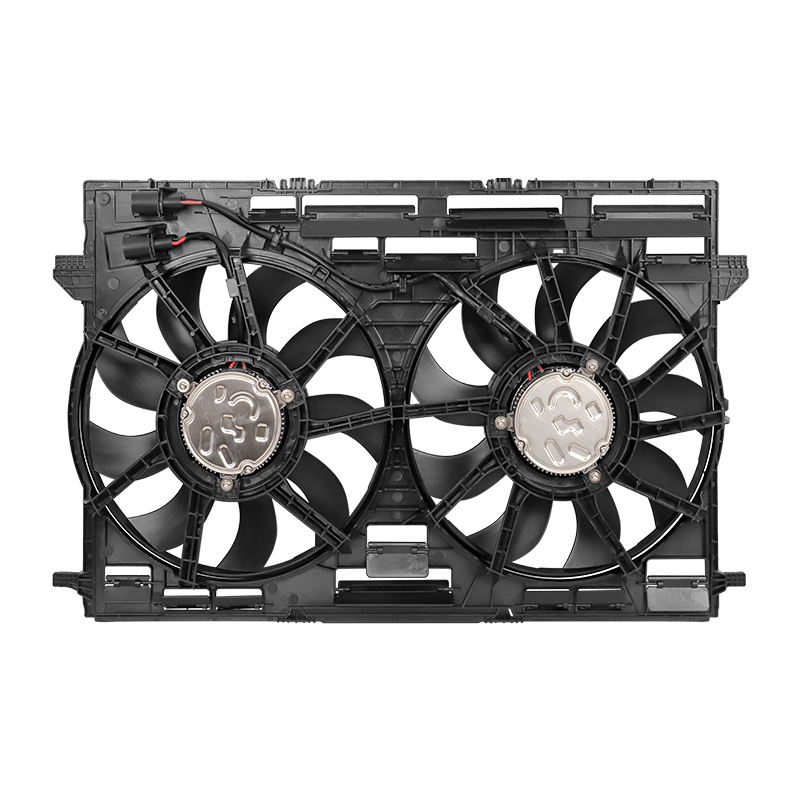2025-05-06
During the design and manufacturing process of HVAC Auto Engine Cooling Fan, it is necessary to ensure that the gap between the fan blades and the fan housing is uniform. This gap has a direct impact on the performance, efficiency, noise, vibration and long-term operation stability of the fan.
1. High-precision mold and manufacturing process control
To ensure the uniform gap between the blades and the fan housing, manufacturers usually strictly control it from the material molding stage:
Precision injection molding or die-casting mold:
Use high-precision CNC machined metal molds to ensure that the geometric dimensions of the fan blades and the fan housing are highly consistent.
For plastic fans, use injection molding machines with precise temperature control to avoid dimensional deviations due to shrinkage differences.
Automated production line:
Introduce robot assembly lines to reduce human errors;
Use visual inspection systems to monitor key dimensional parameters in real time.
2. Structural design optimization
In the design stage, the overall structure of the fan is optimized through engineering simulation and aerodynamic analysis:
Blade and housing matching design:
Use 3D modeling software (such as CAD, SolidWorks) to accurately match the blade shape with the fan housing contour;
Ensure that the blade rotation trajectory maintains a constant distance from the inner wall of the housing.
Tolerance control:
Mark strict geometric tolerances (such as concentricity, parallelism, and runout) in the drawings to ensure that the parts can maintain uniform gaps after assembly;
Perform multi-point measurements on key parts (such as axial holes and mounting surfaces) to prevent eccentricity or tilt.
3. Positioning and calibration during assembly
Even if the accuracy of the parts themselves meets the standards, improper assembly will cause uneven gaps between the blades and the housing:
Use special fixtures and positioning devices:
Use tooling fixtures to fix the fan housing and motor assembly during assembly to ensure that the center axis of the blades is strictly aligned with the center of the housing;
Prevent local gaps from being too small or too large due to assembly offset.
Dynamic balancing test:
After assembly, perform a high-speed rotation test to check whether there is abnormal vibration caused by uneven gaps;
If imbalance is found, it can be corrected by fine-tuning the blade angle or adding counterweights.
4. Quality inspection and online monitoring
In order to further ensure product consistency, a variety of inspection methods have been introduced into the modern manufacturing process:
Laser ranging and non-contact inspection:
Use laser sensors to continuously measure the gap between the rotating blades and the housing;
Achieve 100% online inspection and automatically remove defective products.
Three-coordinate measuring machine (CMM) sampling inspection:
Sampling inspection of production batches to verify whether key dimensions meet design requirements;
Especially suitable for the verification stage after trial production of new products or major process changes.
Image recognition technology:
Use industrial cameras to capture the relative position of the blades and the housing, and combine AI algorithms to analyze whether the gap is uniform;
Improve inspection efficiency, especially for mass production scenarios.
5. Material selection and thermal deformation compensation
Since the fan will be affected by temperature rise during operation, the thermal expansion of the material may cause gap changes:
Select materials with low thermal expansion coefficients:
Such as glass fiber reinforced nylon (PA66-GF), polypropylene (PP) and other composite materials, which have good dimensional stability;
Reduce the risk of deformation caused by temperature changes.
Structural compensation design:
A certain amount of thermal expansion margin is reserved during the design stage so that the fan can still maintain a reasonable gap when running at high temperatures;
Especially suitable for electric fans close to the engine compartment or frequently started and stopped.
These measures work together to ensure that the cooling fan can operate stably, efficiently and quietly under various working conditions.